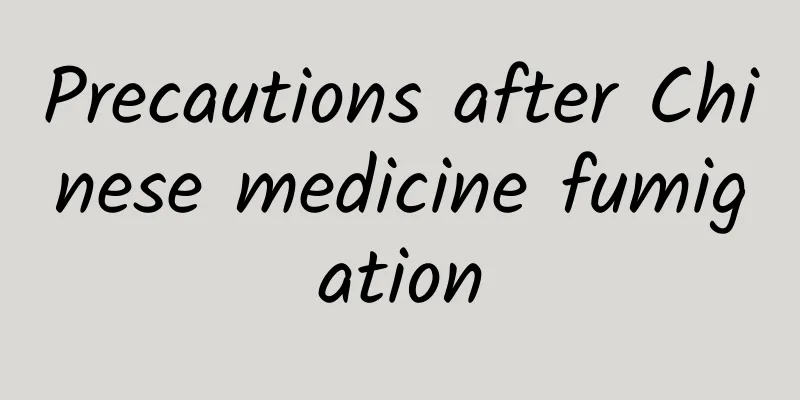Hot search! E. coli was detected in ice cream. Does it mean it is contaminated by feces? Can we still eat it safely?

|
Recently, a media report said that half of the ice creams and popsicles sampled were found to be contaminated with feces, and some ice creams even had coliform bacteria exceeding the standard by 27 times. Many people were very worried after seeing this: There is feces in ice cream? I can’t eat ice cream anymore! What's going on? Can we still eat ice cream without worry? 01Eliform bacteria and total colony count, are they feces? When seeing coliform bacteria and colonies, many people will naturally think that it is contaminated by feces and cannot be eaten. In fact, this is a complete misunderstanding. Coliform bacteria refers to a group of Gram-negative, non-spore-forming bacteria that can ferment lactic acid, produce acid and gas, and are aerobic and facultatively anaerobic when cultured at 37°C for 24 hours. It does not represent a certain bacteria or a certain genus, but refers to a group of bacteria related to fecal pollution with certain characteristics. The total colony count refers to the number of all colonies grown on a specific culture medium at a specific temperature. In fact, "total colony count exceeds the standard" and "detection of coliform bacteria" do not necessarily cause harm to the human body. First of all, the total colony count and coliform group are both microbial indicator bacteria. Internationally, they are usually used by enterprises to control the production process, and are rarely used to determine whether food is qualified or not. The total colony count and coliform group are mainly used to evaluate the cleanliness of food, reflecting whether the food meets the standards in production, processing, transportation and storage. If "exceeding the standard" occurs, it means that there may be irregularities in the production, processing, transportation and storage of food, and the food hygiene needs to be improved. Secondly, our human body and the surrounding environment are full of bacteria. You should know that there are tens of billions of bacteria in our human intestines all year round, weighing nearly 1 kilogram, and most of these bacteria will not make people sick. Moreover, the environment we live in and the air we breathe are full of bacteria, which do not affect our health. Bacteria and microorganisms can be divided into good and bad. Some have no effect on us, and some are even beneficial to us. Typical examples include "probiotics", which are bacteria that are beneficial to the human body. Whether bacteria are harmful or not depends on whether there are pathogenic bacteria. Common pathogenic bacteria include Salmonella, Staphylococcus aureus, Listeria, etc. As long as there are no such pathogenic bacteria, there will be no harm to the human body. Therefore, you don’t have to think that it is dangerous when you see “bacteria” or “microorganisms”. 02Why exceeds the standard? Coliform bacteria and total colony count are hygiene indicators. So why does coliform bacteria exceed the standard? There may be two reasons: First, it may be that the manufacturing company’s production room has irregular operations and inadequate hygiene control. Second, it is also possible that many supermarkets and stores turn off the electricity after closing at night. In order to save electricity, many supermarkets and stores turn off the electricity in the store after closing at night. In this way, the freezer and refrigerator will have no electricity, the ice cream will melt, and bacteria will breed. This is very common in some small cities. 03Can ice cream still be eaten after it melts and then freezes again? Ice cream is a product made from water, milk, eggs, sugar, oil and other raw materials through mixing, sterilization, homogenization, cooling, aging, freezing and other processes. It still contains a lot of nutrients, and if it melts, it may breed bacteria due to the increase in temperature. Therefore, you should store the ice cream you buy at home in the refrigerator as much as possible to avoid repeated thawing and defrosting, especially not leaving it outside for a long time. As long as it is kept in the refrigerator, even if it is the ice cream that was not finished last year, it can be eaten safely after being frozen for a winter. Image source: Pixabay Of course, if you thaw your own ice cream occasionally and then freeze it immediately, as long as you put it in the freezer in time and don't leave it out for a long time, it's usually not a big problem. But if it's severely thawed and the shape is changed when you refreeze it, and the taste is not good, it's recommended to "eat less", because it probably won't taste good. 04What should you pay attention to when eating ice cream? 1. Try to go to regular supermarkets and platforms to choose regular products Relatively speaking, ice cream produced by regular manufacturers will be more reliable, the cold chain of regular supermarkets and platforms will be better, the sealing and sterilization of packaging will be more stringent, and the refrigerator will not easily lose power, so the quality of such ice cream is more guaranteed. 2. Don’t eat too much or too quickly when it’s hot In order to cool down during the summer heat, people like to eat ice cream and other cold drinks, and they tend to eat more when it is hot. We remind you that when it is especially hot, you should be careful not to eat too much ice cream or cold drinks too quickly, because when people are hot, eating too much cold drinks at once may cause "ice cream headache", which is a kind of neuralgia caused by eating too much cold drinks. 3. Eat in moderation Ice cream usually contains a lot of sugar and fat, and eating too much can easily make you fat. It is recommended that you eat it in moderation. People with dental caries, obesity, high blood lipids, high blood pressure, and high blood sugar should be careful not to eat too much. Source: Chongqing Science and Technology Museum Author: Ruan Guangfeng, Master of Nutrition and Food Safety, China Agricultural University Audit expert: Li Chunli Statement: Except for original content and special notes, some pictures are from the Internet. They are not for commercial purposes and are only used as popular science materials. The copyright belongs to the original authors. If there is any infringement, please contact us to delete them. |
<<: Pang Guofang: Whoever controls data resources controls the initiative
>>: From toxic gas to life guardian, this pharmacologist justifies nitric oxide
Recommend
Can dried Cynomorium songaricum really be soaked in water and drunk?
Cynomorium songaricum is also a kind of tradition...
What is the best way to drink American ginseng?
Korean ginseng is a common Chinese medicinal mate...
Attention! These 6 foods are highly toxic. Don’t keep them, let alone eat them! Throw them away immediately!
In life, many foods are delicious when they are n...
Quantum computing accuracy is not high enough? IBM's "error mitigation" technology is expected to solve the problem
In June 2023, IBM Quantum and its collaborators u...
Why does school always start in September? It turns out that there is a meteorological reason!
The new school season is coming Parents have been...
The efficacy and function of Qiqiyacao
Li Shizhen tasted hundreds of herbs and then wrot...
Men, beware! An extra 11cm in waist circumference can increase your cancer risk by 25%, but it’s different for women →
Compiled by: Gong Zixin Body shape and overweight...
The efficacy and function of white cardamom
White cardamom is something that many people are ...
Excessive calcium supplementation is harmful! Many people have taken calcium supplements incorrectly over the years
Is the TV cabinet of your elderly also piled with...
We are not allowed to eat green onions. Is this rule effective?
"Red umbrellas, white poles, let's lie o...
What is Seabuckthorn
Sea buckthorn is neither a plant nor a fruit. In ...
What should I do if wolfberries get damp?
In real life, people use wolfberries very widely....
Do you have a special liking for poultry? Be careful of "parrot fever" knocking on your door! Here are some tips on how to prevent it~
Experts from Yiyang Central Hospital remind peopl...
The efficacy and function of Artemisia pedicularis
Chinese medicinal materials are very effective in...









